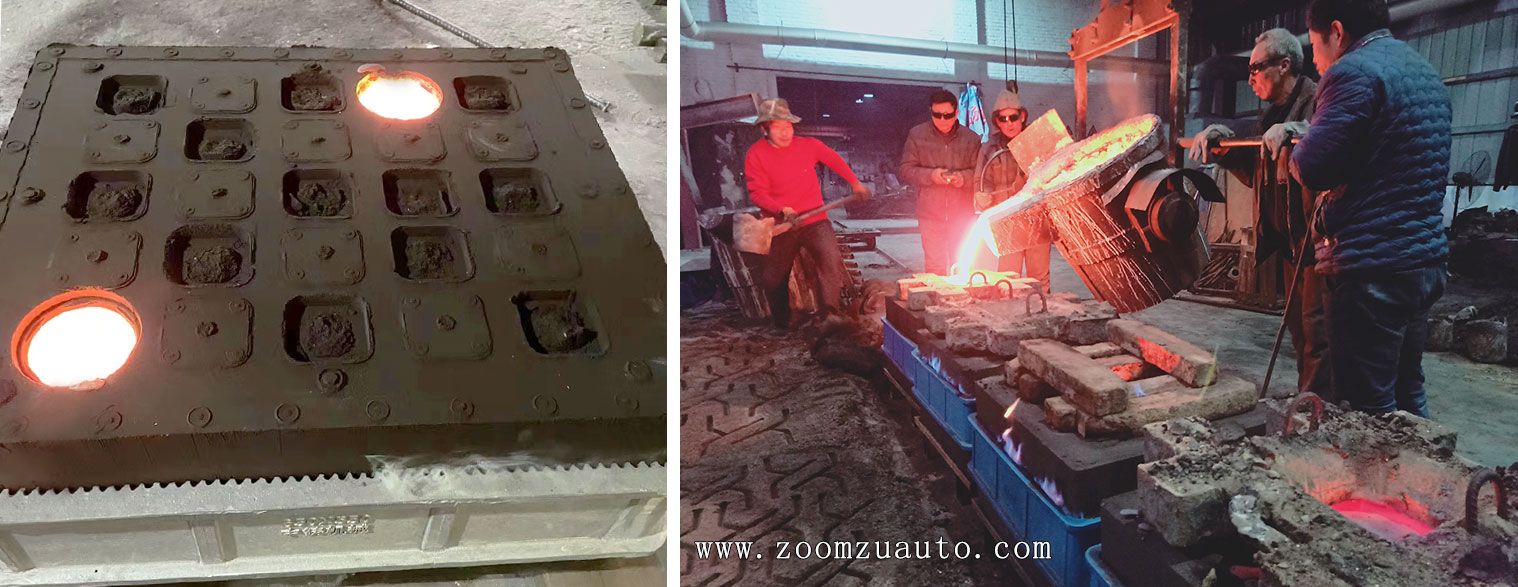-

-
Guangzhou Zhongzhu Machinery Co. LtdSand casting molding machine manufacturer
-
008613926238353 WhatsApp:
-
E-mail: 470199755@qq.com

After completing the molding of the sand mold through an automated casting molding machine, timely emission of gas from the internal cavity of the sand mold is also crucial when pouring metal liquid into the sand mold; Under the thermal action of liquid metal, a large amount of gas is generated inside the sand mold. If the sand mold does not have good exhaust capacity, various unexpected situations are prone to occur during the pouring process, such as cracking of the sand mold, gas promoting the reflux of the metal liquid, inability of the metal liquid to fully fill the mold cavity, and the production of pores in the casting; Below, we will specifically introduce several methods for timely discharging the gas generated by high temperature in the mold cavity during the pouring process of sand molds:

1. We can install multiple exhaust needles on the top of the sand box in the upper part of the automated casting molding machine. Its function and principle are similar to the traditional manual sand casting exhaust method. Air outlets are reserved in the upper part of the mold cavity to achieve the discharge of hot air. During use, we calculate the height of the model and the length of the exhaust needle, and then polish the end of the exhaust needle in contact with the mold into a pointed shape to avoid the occurrence of sand falling off the sand mold due to the vibration of the exhaust needle during mold demolding; This type of sand mold exhaust method is generally applied to relatively single mold batch molding, and can reduce the use of some metal iron liquid during the pouring process. Even if the pores are not connected to the metal iron liquid in the mold cavity, it still has a certain exhaust effect, which needs to be analyzed according to the actual situation before use;

2. The second method is the most commonly used and effective sand mold exhaust method, which is to set a gap in the upper part of the sand mold cavity that is connected to the metal liquid. The principle is the same as reserving a metal liquid pouring port in an automatic molding machine, which is equivalent to adding a metal liquid filling hole as a hot air exhaust hole in the production and modeling of the sand mold, The position of the exhaust hole needs to be designed according to the hole position where the molten metal enters. Its purpose is to achieve the most complete and rapid direct discharge of gas inside the mold cavity during the filling of the molten metal. This exhaust method is also beneficial for supplementing the casting with the molten metal during the cooling process after pouring.

3. During the pouring process of the sand mold, we should also control the pouring speed of the metal iron liquid. Usually, the metal iron liquid is slowly poured into the pouring hole of the sand mold. When the iron liquid enters the internal cavity of the sand mold and there is no reflux or overflow of the iron liquid, the pouring speed should be increased again, so that the iron liquid can quickly and evenly fill the internal cavity of the sand mold, Reasonable pouring speed and pouring method can also allow the sand mold to exhaust the body evenly to the outside during the pouring process;
4. Control the breathability of the molding sand well. In traditional manual wet sand casting, we will divide the molding sand into two types: "surface sand" and "back sand"; Its function is to reduce the production cost of molding sand to a small extent, among which "surface sand" is a relatively delicate and sticky casting sand that comes into direct contact with the mold; And "back sand" is a relatively rough and large particle casting sand, so "back sand" has a certain breathability effect; The casting sand using automated molding equipment is a single type of mixed sand, so we also need to control the permeability of the casting sand, control the moisture content of the sand, and handle the dust in the old sand to improve the permeability effect of the sand;